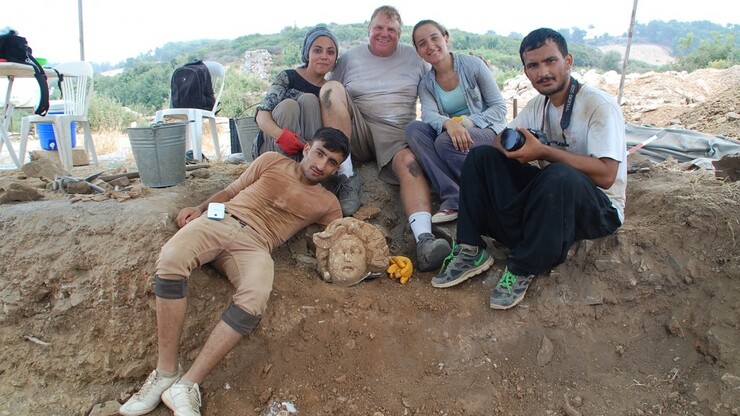· 4 min read
Ongoing excavation in Turkey yields light industrial finds
An ongoing, Nebraska-led archaeological dig in has continued to define the history of an ancient city on the southern coast of Turkey.
Led by Michael Hoff, professor of art history, the summer 2017 dig season at the Antiochia at Cragum excavated three kilns, doubling the number of kilns found at the site. The discovery along with a previously uncovered glass manufacturing workshop — all found in the bath house area of the city — indicate the area served light industrial needs during the late Roman Empire.
The city was founded by Antiochus IV of Commagene, a client-king of Rome, in the middle of the 1st century.
Hoff, who has directed the excavation since 2005, said it’s not surprising to find that the area had been repurposed — from a bath house to a light industrial center — over time.
“The bath, we now know, dates to the second half of the first century A.D., so it was among one of the earliest public buildings constructed after the site was founded,” Hoff said. “Like anything, no building lasts forever. So even these buildings can’t serve the same function permanently.”
Through historical research, the dig team has learned that the city was invaded by Persians in the year 260, which would have given the bath house about 200 years of life.
“We don’t know for sure the Persians destroyed the building, but it’s possible,” Hoff said. “It was probably damaged and repaired.”
One excavation goal has been to find the heating system for the Roman baths.
“We found a few fragments of the original suspension system that raised the floor to allow the hot gases to circulate underneath,” Hoff said. “But what happened was that the floor itself was destroyed, and these kilns were constructed about halfway down so, to us, that sounds like the building was already out of commission. And if they’re building a kiln inside of it, which needs a lot of space to allow the smoke to escape, we think that the ceiling was probably partly gone.”
Hoff said the light industrial use probably dates to late Roman or early Byzantine period, which is between the 5th and 7th centuries.
The team has excavated about 40 percent of the bath building.
“We have already found six kilns and one glass workshop, so who knows what else we are going to find,” Hoff said. “But this is a pretty massive light industrial center.”
And, the kiln discoveries may lead to more details about the life of the city.
“Ceramics is the ‘stuff’ of archaeology because we use it for so much other information than simply dating,” Hoff said. “It also helps us understand the trade patterns. It helps us understand what is being made, what is being traded, what food, what wine, what oils and things like that, so it’s a really important part of any excavation.”
The team has added Asena Kizilarslanoglu from Turkey’s Ahi Evran University to research the ceramic and kiln discoveries.
Other research activity at the site included:
Continued excavation of the Bouleuterion, a city council house, and the Odeon, a theatre. Discoveries include a bracket that once supported grandstand seating. Wood still attached to the bracket was sent to a laboratory for Carbon-14 dating. Early results indicate it dates between years 75 and 175.
Work by Tim Howe, a professor of history at St. Olaf University, inside a crypt uncovered lamps and part of a chancel screen, which is an ornate partition.
A survey of standing architecture uncovered an inscription that is the first to indicate the name of the city.
Even after 12 seasons of excavation, Hoff said the city continues to provide inspiration and discovery.
“I always get excited by it,” he said. “But, you know, it is a lot of hard work, especially to go right from when school ends to Turkey and then when we end, I go right back into teaching. So you don’t have a whole lot of time to smell the flowers or process everything. But of course it’s fun or I wouldn’t be doing it.”
If you’re interested in supporting Hoff’s research in Turkey, a fund has been created at the University of Nebraska Foundation. Learn more about the fund.








